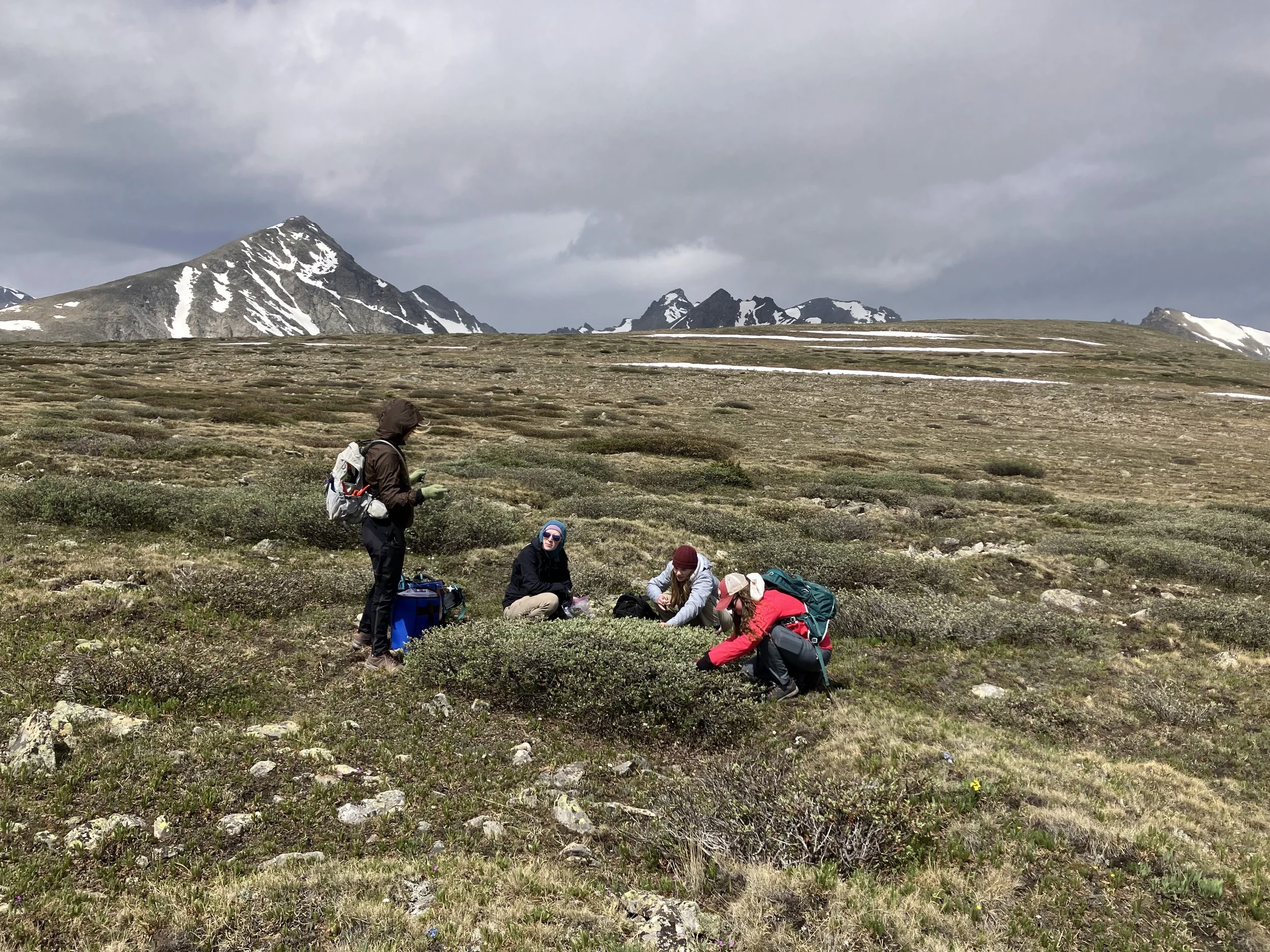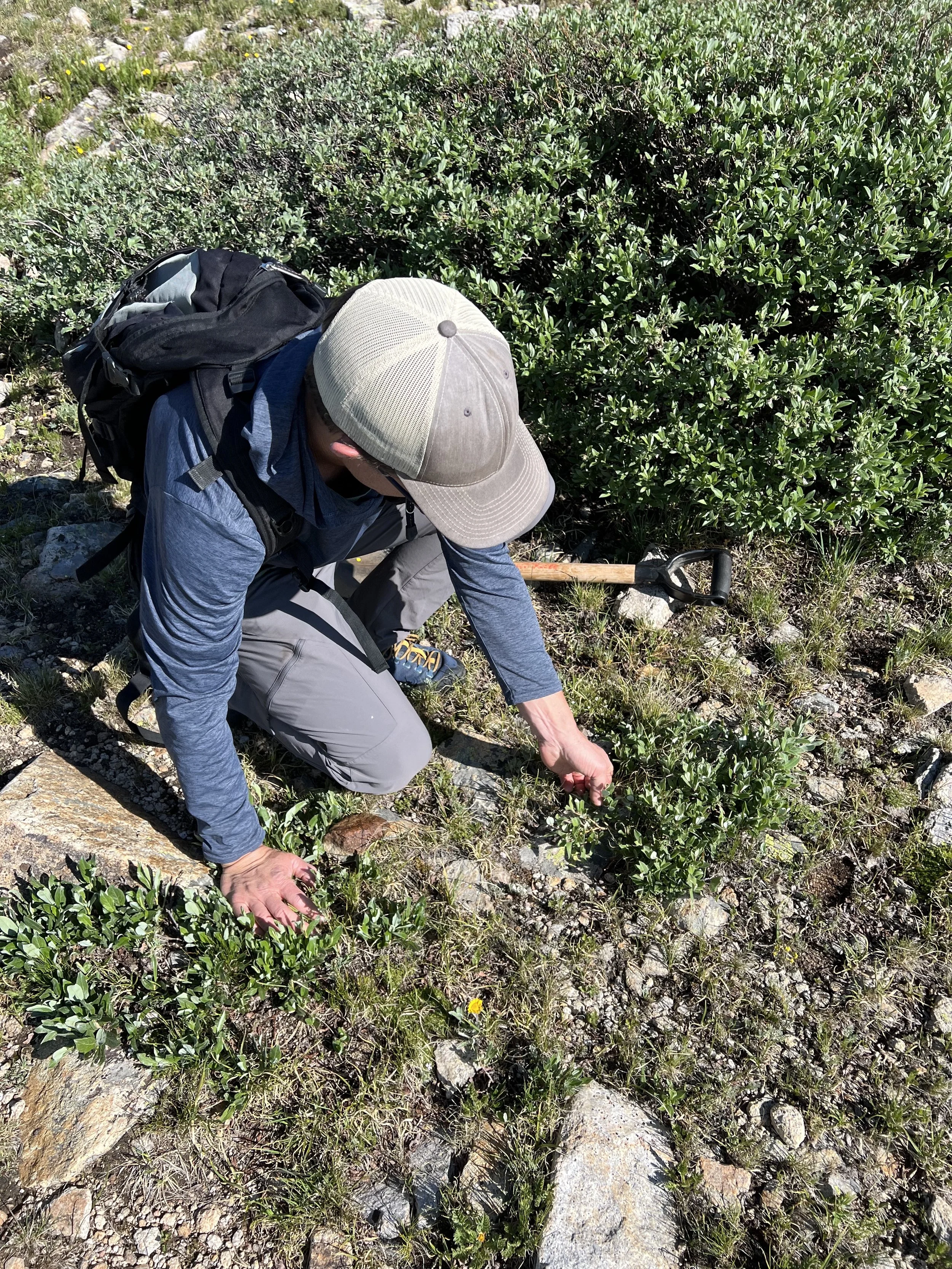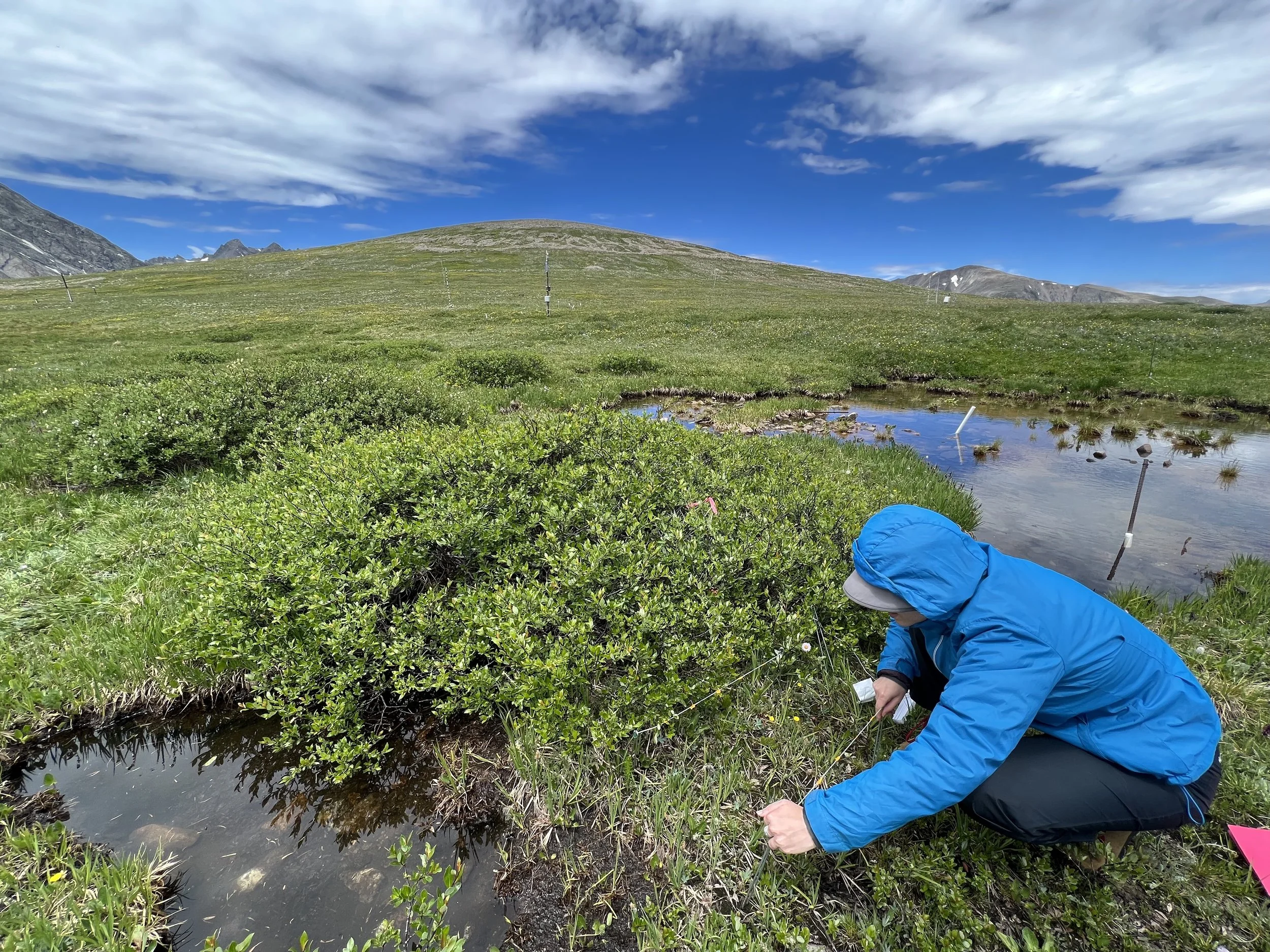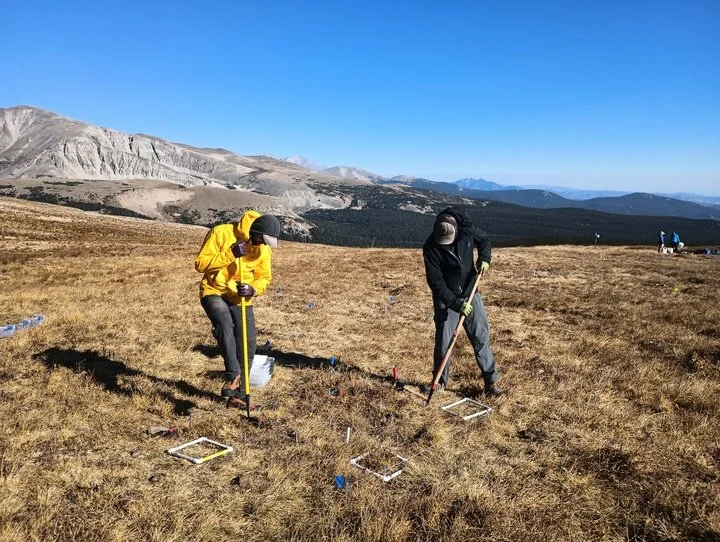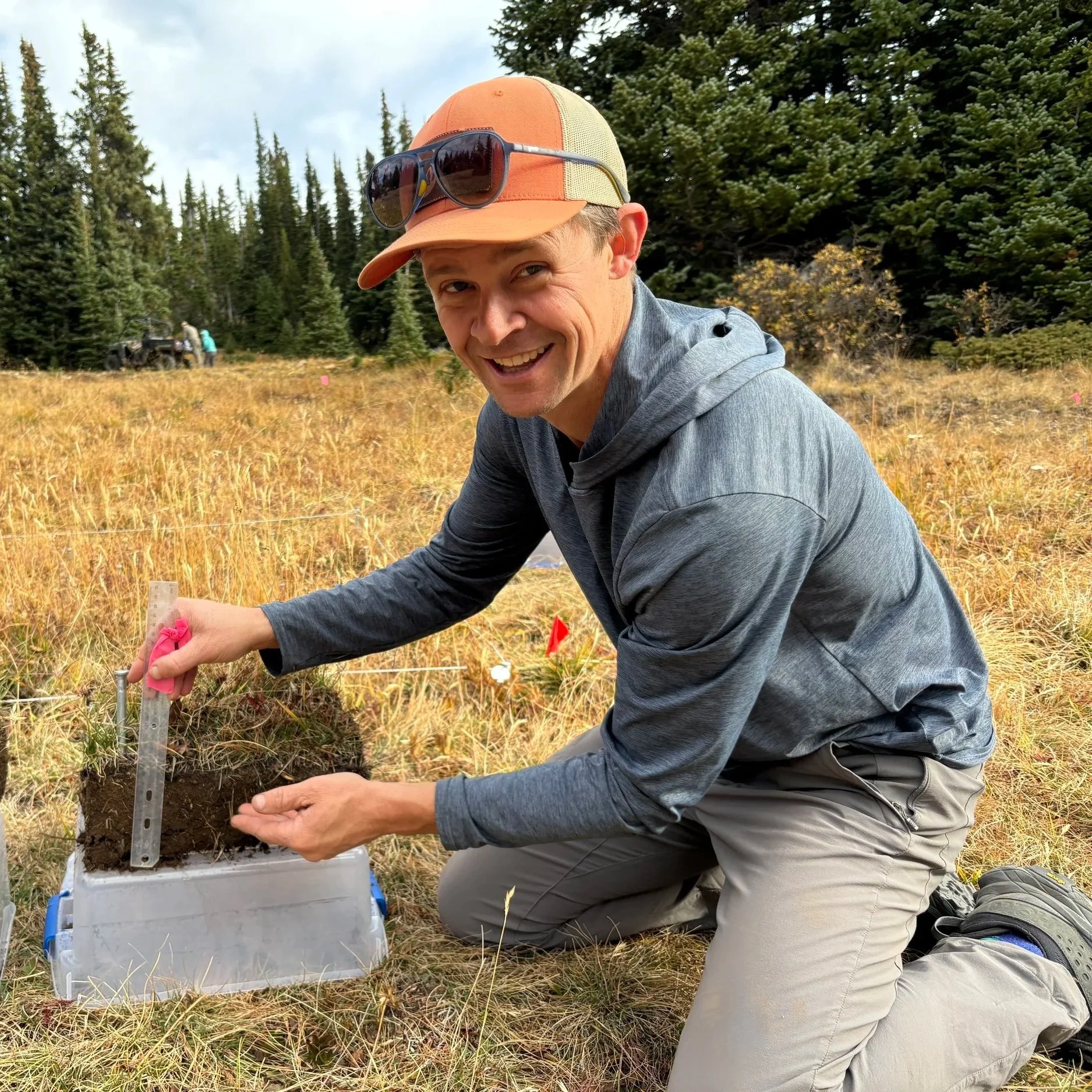Niwot researchers receive $1.6M grant from NSF to study how microbes influence shrub encroachment into tundra ecosystems.
Niwot researchers collect plant and soil samples as they study shrub expansion in the alpine tundra on Niwot Ridge. Photo courtesy of Will Wieder.
Supported by a recent $1.6M grant from the National Science Foundation, researchers at the University of Colorado Boulder and Colorado State University will start exploring how plant-soil interactions influence woody plant encroachment into the alpine tundra on Niwot Ridge.
Tundra ecosystems— found in the Arctic and high-elevation mountain tops— are typically characterized by their low-lying, non-woody (herbaceous) vegetation. However, tundra ecosystems have been increasingly impacted by the expansion of woody plants, a process known as shrub encroachment. While much research has focused on the physical drivers behind shrub encroachment, this project— led by a team of researchers at CU Boulder’s Institute for Arctic and Alpine Research and Department of Ecology and Evolutionary Biology— is unique in its examination of the interactions between living organisms, specifically those of shrubs and mycorrhizal fungi, that may influence how quickly shrub encroachment occurs.
Dr. Will Wieder harvesting a willow (Salix sp) cutting on Niwot Ridge. Cuttings were collected for a greenhouse experiment used in a pilot study for the newly funded NSF project looking at shrub expansion in alpine tundra. Photo Credit: Katya Jay.
As Dr. Will Wieder, the project’s principal investigator and a co-PI for the Niwot Ridge LTER, explains, “Some aspects of woody encroachment are relatively well-understood, but how the biological connections between fungi, plants, and soil may create feedback loops that either promote or limit rates of shrub expansion is less clear. Our research aims to bridge this knowledge gap by studying how these feedbacks work in alpine tundra ecosystems.”
The project, based at the Niwot Ridge LTER, will combine field surveys, experiments, remote sensing technology, and ecosystem modeling to examine the role of ectomycorrhizal fungi in driving shrub growth. These fungi form symbiotic relationships with shrubs, potentially influencing nutrient cycles and plant growth rates. By evaluating how these associations affect the expansion rates of shrubs across spatially variable alpine terrain, the project aims to uncover density-dependent dynamics that may accelerate or slow the encroachment process.
“The insights from this research are essential not just for understanding how tundra ecosystems are changing today but also for predicting future vegetation transitions,” said Dr. Katya Jay, one of the project’s co-leads and a postdoctoral researcher with the Niwot Ridge LTER. “Our work will contribute to a deeper understanding of how mycorrhizal interactions influence woody plant expansion, which could have profound implications for understanding how these ecosystems function and may change in the future.”
Lex Emond conducting undergraduate research on shrubs on Niwot Ridge. As an undergraduate in CU Boulder’s Research Experience for Community College Students (RECCS) program, Lex worked with Dr. Katya Jay and The Suding Lab to study the influence of shrubs on herbaceous communities on Niwot Ridge. Over the coming years, NSF funding for this shrub encroachment project will support the engagement of many more undergraduate students in field research on Niwot Ridge. Photo credit: Katya Jay.
In addition to its scientific goals, the project will engage a diverse range of participants. K-12 students and educators will be involved through outreach activities, and undergraduate and graduate students will gain hands-on experience in ecological research. The project also provides valuable training to ecologists on the practice and science of running the Community Land Model (CLM), a tool used for understanding ecosystem processes across landscapes.
As research gets underway, Drs. Alisha Quandt and Katherine Suding from the University of Colorado, Boulder and Dr. Daniela Cusack from Colorado State University will be leading the effort with Dr. Will Wieder from the National Center for Atmospheric Research (NCAR) and Dr. Katya Jay from the Environmental Data Science Innovation and Impact Lab (ESIIL) at CU Boulder.

